How to Make Homemade Liniments (+printable, formula & recipes!)
If you have aches and pains, bruises, or varicose veins, then a homemade liniment might be just what you need!
Here’s a whole guide on how to make your own liniments, which herbs and ingredients to use, some of my favorite liniment recipes, plus a basic formula so you can create your own.
I’ve also included a handy free printable “cheat sheet” to use as a helpful reference!

Liniments are SO easy to make and are a great natural remedy to keep on hand.
You might think the word, “liniment”, sounds really old-fashioned and like something your great-great grandpa rubbed on his rheumatism – and you’d be right!
Liniments are indeed old-fashioned; forms of them have been around since at least the times of Renaissance physician Paracelsus, and became popular in the mid 1800’s to early 1900’s as “cure-alls” (though unfortunately, many of those had sketchy ingredients like chloroform and belladonna!)
While they won’t cure all the things, today’s liniments are easily made at home with safe ingredients, can be very effective for some ailments, and absolutely have a place in our modern natural remedy cabinet!
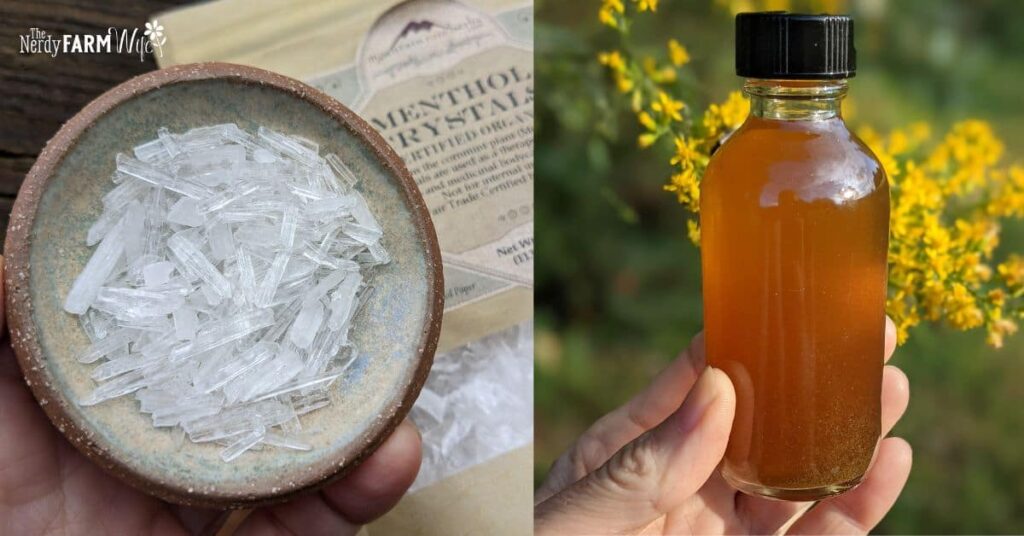
Conditions to Use a Liniment For
Depending on the ingredients, liniments can be used to:
- disinfect cuts,
- minimize the appearance of varicose veins,
- be rubbed over bruises to heal them up faster,
- or what they’re best known for – help relieve arthritis, aches, and pains.
One thing you don’t do with liniments is drink them or take them internally, because they’re just not formulated for that purpose and most of them are toxic to drink.
(Instead, you’d want a tincture or glycerite for internal use. Future articles incoming about making those!)
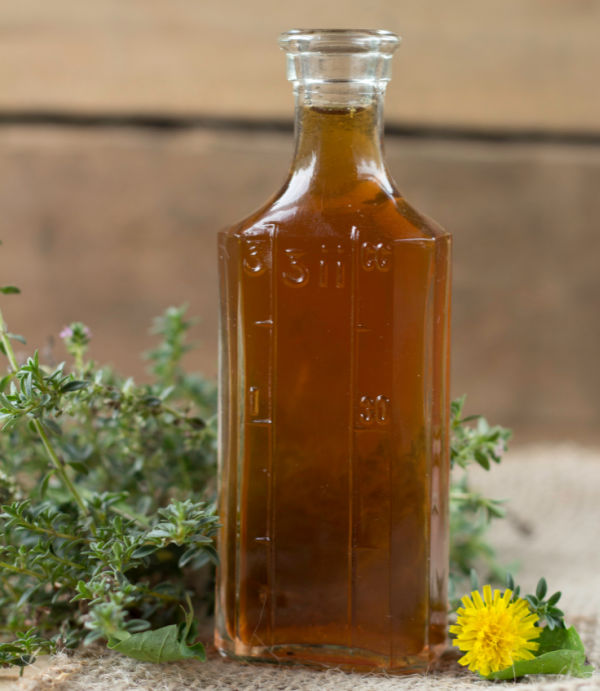
Liquid Options to Use in a Liniment
Unlike herbal infused oils, liniments are made with water-based ingredients that quickly evaporate from your skin.
Arguably the most popular ingredient for making liniments is regular isopropyl alcohol (also called rubbing alcohol), though there are several other more natural options included in the list below.
You can also mix and match ingredients – for example you could use half witch hazel and half vinegar. Or 75% witch hazel and 25% rubbing alcohol. Experiment and see which combo you like best!

Witch Hazel
– calms and soothes redness and inflammation, helps reduce swelling, useful for bruises, bug bites, sunburn, varicose veins; downside is that witch hazel extracts herbs a little less effectively than stronger alcohol preparations; witch hazel makes a good balancer that softens the drying affect of vodka/alcohol
80 to 100 Proof Vodka
– extracts most herbs very effectively, especially resins; downside is that pure vodka/liquor is drying to your skin; using a large portion of witch hazel (50 to 60%) combined with alcohol can give you the best of both ingredients
Isopropyl Alcohol (Rubbing Alcohol)
– a classic base for liniments, quick acting and highly effective, but also the least natural option on the list. Many herbalists will bend their “natural-ingredients-only” rules in this case and use rubbing alcohol for liniments because of its high effectiveness level.
Rubbing alcohol comes in various strengths; 70% is a good standard to use, but experiment with what you have.
Don’t feel like you have to use rubbing alcohol (or vodka) though, if you’re sensitive to it, are worried about keeping/using it around small kids, or avoid alcohol for personal reasons. The safest bet in that case is apple cider vinegar.
Apple Cider Vinegar
Liniments can be made with vinegar if you wish to avoid alcohol; the main downside is the strong vinegar smell, but that can be softened by diluting with witch hazel.
What About Vegetable Glycerin?
This is optional and can be used if you feel that your liniment is too drying on your skin. Too much glycerin will feel unpleasantly sticky, so try just a few drops and gradually add more if needed.
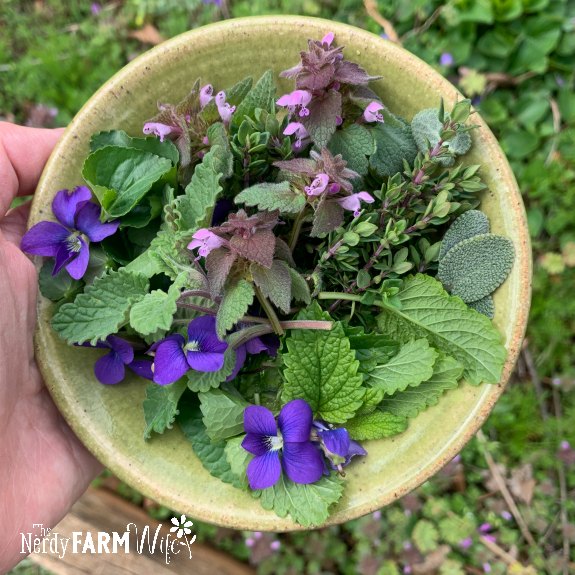
Herbs & Resins for Homemade Liniments
You have tons of options when it comes to customizing your liniment with herbs! I’ve listed over two dozen herbs to explore in the table below.
You can use either fresh or dried herbs, though I tend to prefer dried herbs to help with a longer shelf life. If you use fresh herbs, chop them up in small pieces first.
Many of these herbs are warming, which means they stimulate circulation and reduce stiffness – they’re helpful when your pain feels better when you apply a heating pad. Cooling herbs may be helpful when there’s redness and inflammation, or if you’re seeking a hot/cold effect.
Antimicrobial or antiseptic herbs are used in a few liniment recipes for healing cuts and sores. Resins should be crushed/powdered and will extract best with some form of alcohol.
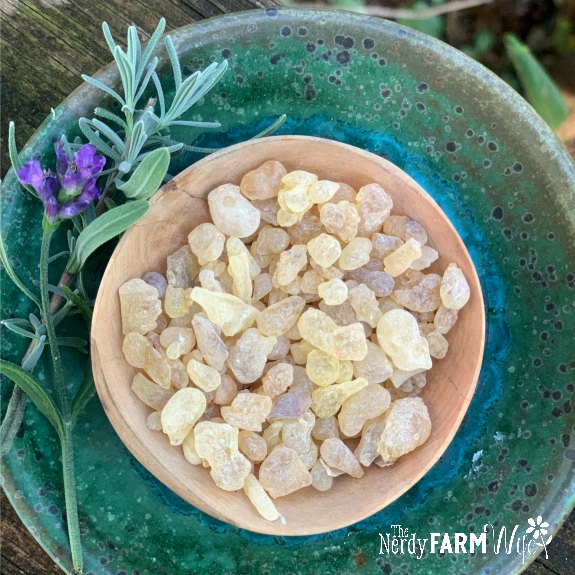
I buy most of the herbs that I don’t grow from Mountain Rose Herbs. You can also check Farmhouse Teas for a selection of high quality, organic dried herbs as well. (<- Those are affiliate links, which means I would make a small commission if you click one and make a purchase.)
| Herb Name | Properties, Notes |
| Arnica (Arnica montana, A. chamissonis) | for bruising, swelling, pain, arthritis, aches, do not use arnica on broken skin or cuts |
| Bee Balm (Monarda fistulosa, M. spp.) | Anti-inflammatory, antimicrobial, helps rheumatic joints |
| Calendula (Calendula officinalis) | antimicrobial, repairs damaged skin, for varicose veins |
| Cayenne (Capsicum annuum) | decreases sensation of pain, feels warming, use very small amounts to avoid burning your skin |
| Chamomile (Matricaria chamomilla) | reduces inflammation, soothes irritated skin |
| Comfrey (Symphytum officinale) | for bruises, sprains, relieves pain, helpful for bone injuries, do not use on open wounds |
| Dandelion Flowers (Taraxacum officinale) | anti-inflammatory, helpful for aching, and painful damaged skin |
| Dragon’s Blood Resin (Daemonorops draco, Croton spp, and more) | used for wound healing, inflammation, and rheumatism |
| Elderflower (Sambucus spp.) | can be added as a skin soothing benefit |
| Frankincense Resin (Boswellia sacra) | anti-inflammatory, relieves pain |
| Ginger (Zingiber officinale) | warming, increases circulation |
| Goldenrod (Solidago spp) | for general aches and pains |
| Goldenseal (Hydrastis canadensis) | powerful antiseptic, use small amounts (by the 1/4 tsp at a time), slow growing endangered woodland herbal, use Oregon Grape as a sub if needed |
| Helichrysum Flowers (Helichrysum italicum) | for aches, pains, bruises, strains, varicose veins |
| Juniper Berries (Juniperus communis) | warming, stimulates circulation |
| Lavender Leaves & Flowers (Lavandula angustifolia) | cooling, all-purpose skin soother |
| Marshmallow Root (Althaea officinalis) | very soothing, cooling |
| Meadowsweet (Filipendula ulmaria) | rich in pain relieving salicylic acid; avoid or check with doctor first if allergic to aspirin |
| Myrrh Resin (Commiphora myrrha) | anti-inflammatory, antiseptic |
| Oregon Grape (Berberis nervosa) | antimicrobial, can be used to replace goldenseal, which is a threatened herb |
| Peppermint (Mentha x piperita) | cooling, relieves pain (though the herb is very mild, menthol crystals will be much stronger) |
| Pine Resin (Pinus strobus, P. spp.) | warming, used for arthritis, stiff joints, and rheumatism, pine needles could be infused as well |
| Purple Dead Nettle (Lamium purpureum) | anti-inflammatory, antimicrobial, for aches, pains |
| Rosemary (Rosmarinus officinalis) | stimulates circulation, helps aching joints |
| St. John’s Wort (Hypericum perforatum) | especially helpful for nerve pain, varicose veins, swelling |
| Valerian Root (Valeriana officinalis) | can be used externally as a mild relaxant and for sore muscles |
| Violets (Viola odorata, V. spp.) | cooling, soothing, helpful for swollen lymph |
| Willow Bark (Salix alba) | anti-inflammatory, rich in pain relieving salicin (a compound similar to aspirin), for ages 16+, not for pregnancy, nursing, check with doc if on blood thinners |
| Yarrow (Achillea millefolium) | anti-inflammatory, helps with cramps, pain, varicose veins, and irritated skin |
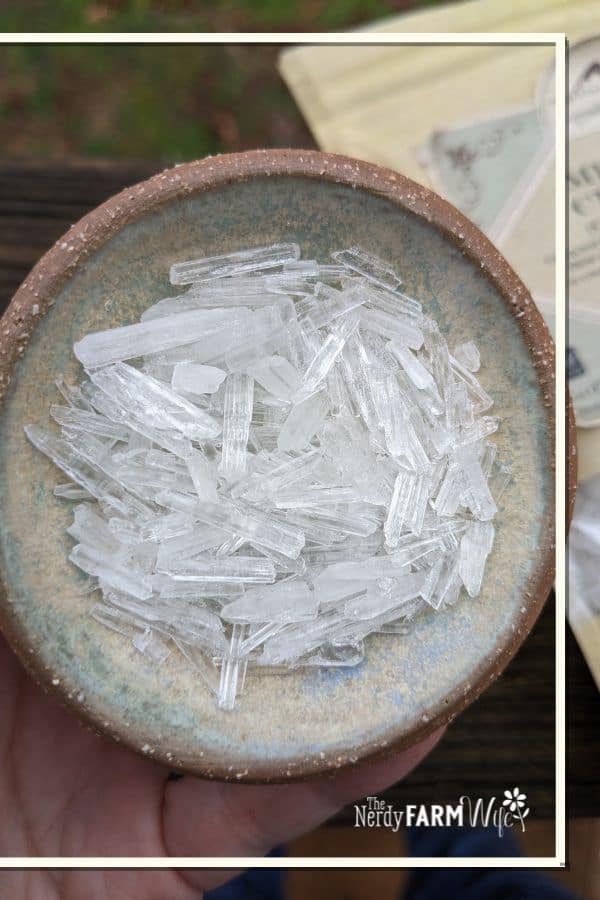
If you’d like to add menthol crystals:
Menthol crystals are strongly scented solid crystals that have been extracted from peppermint or cornmint essential oil.
Menthol is a common ingredient in commercial pain preparations because it has a cooling and pain relieving sensation when applied to your skin.
I buy menthol crystals from Mountain Rose Herbs.
Before adding to your liniment, the crystals should be dissolved in a small glass cup or bowl with 1 tablespoon of rubbing alcohol or vodka. Once they’ve been stirred in (I use a toothpick for stirring) and melted into the alcohol completely, then you can add the menthol mix to your finished liniment.
Menthol is used in small amounts – usually up to or around 1 to 2% of a recipe. Some commercial liniments boast 4% menthol content, but I don’t go that high in my homemade products.
I add about 1/8 to 1/4 tsp menthol crystals for about 1 cup of liniment. That’s 0.6 to 1.2 ml in 240 ml of liniment, or a mere percentage rate of 0.25 to 0.5% and it’s still really noticeable!
Higher amounts are just too strong for my sensitive skin, so I encourage you to start low and add more only after testing lower amounts on your skin.
Wear gloves when handling the undissolved menthol crystals and avoid rubbing any into your eyes. Keep out of reach of kids.
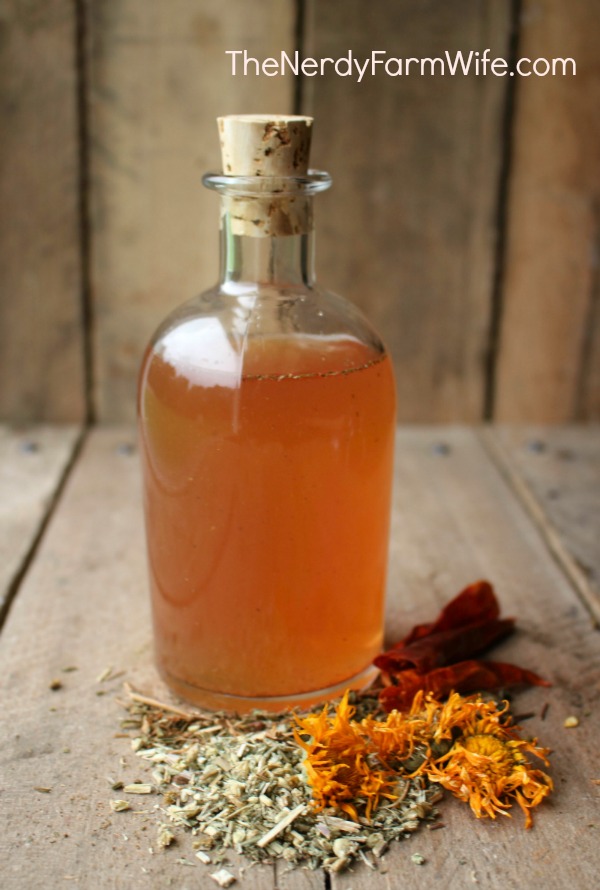
Basic Homemade Liniment Formula
It couldn’t be simpler!
Just fill a jar about 1/3 to 1/2 of the way with herbs. If you’re using fresh, chopped herbs, you may end up filling the jar more than halfway.
That’s okay! Liniments are flexible and can accommodate all kinds of amounts.
Next, cover the herbs with alcohol, witch hazel, and/or vinegar. Any combination of those that you like, just make sure the herbs are covered by at least several inches of liquid.
I fill the jar almost to the top, but leave some space for the dried herbs to expand.
Stir well, cover with a lid, and infuse for 3 to 4 weeks, or even 6 weeks if you’d like.
If you used vinegar in your recipe, make sure that your lid isn’t’ metal, or the acid will start forming corrosion, that we don’t want in our product. Use a plastic cap, or put a few layers of wax paper between the jar top and a metal lid.
Strain, and you now have your own homemade liniment!
Be sure to label your liniments clearly and – especially if it contains rubbing alcohol – label with a skull and crossbones symbol.
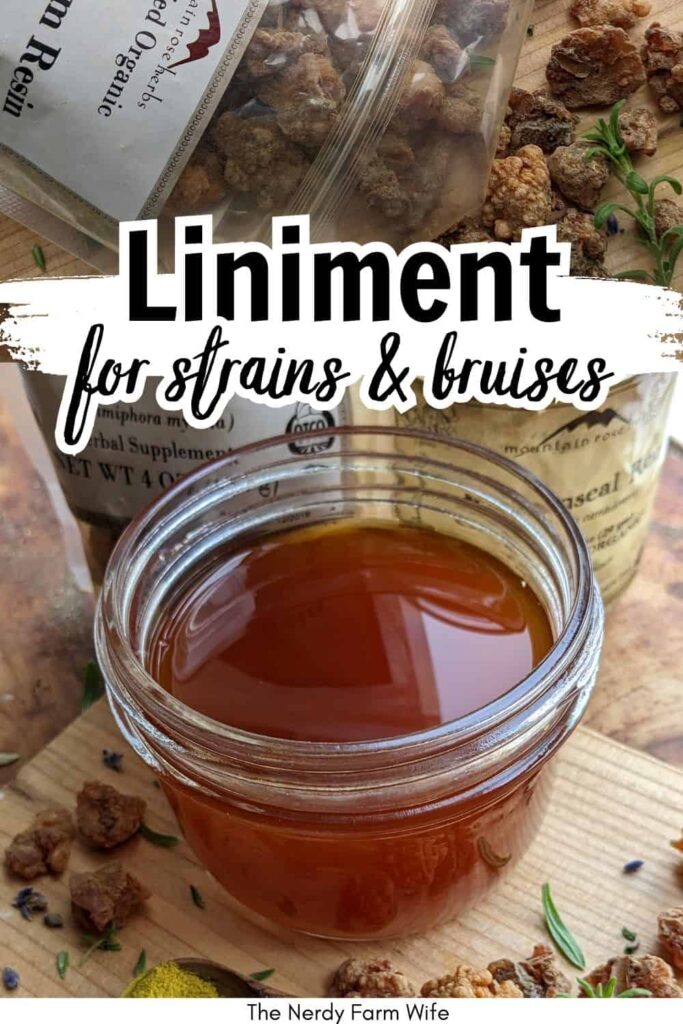
Liniment Recipes
The Famous Jethro Kloss Original Liniment Recipe
An herbalist classic is Jethro Kloss’s liniment recipe from the book, Back to Eden.
“An excellent liniment for strains and bruises is made from a mixture of a small teaspoon each of myrrh and goldenseal and a half teaspoon of red pepper added to a pint of alcohol which is allowed to stand for seven days. Shake well for every day.
This is also an excellent liniment for any sore, fresh wound, or ulcer.”
NOTE: Goldenseal is an endangered plant, so may need to be substituted for with Oregon grape powder. However, I do plant and grow goldenseal in our forest, and always keep a small amount of purchased powder on hand for when my farm animals get a predator bite, or other wounds, and do use it sparingly in skincare products and remedies.

Liniment for Varicose Veins
This liniment recipe features:
- yarrow
- calendula
- St. John’s wort
- cayenne
- witch hazel
The herbs can be dried or fresh. Ideally, you’d use fresh St. John’s wort, but in the case of liniments, it’s okay to use dried.
This liniment is used once in the morning, and again in the evening. Rub it towards the heart to help tighten and tone varicose veins and improve blood flow.
You can find the full recipe at my article:
Liniment for Varicose Veins & Muscle Pains

Arnica Menthol Liniment
This cooling liniment is great for tired legs and sore backs.
To make it, you’ll need:
- an 8 ounce jar
- 4 tablespoons dried arnica flowers (can be combined with, or swapped out for goldenrod flowers or dandelion flowers)
- 1/3 cup 80 proof vodka or rubbing alcohol
- 1/2 cup witch hazel, or enough to fill the jar
- 1/8 to 1/4 teaspoon of menthol crystals, dissolved in 1 tablespoon vodka or rubbing alcohol
Place the herb(s) in the jar and cover with the vodka or rubbing alcohol. Stir well. Fill the jar the rest of the way with witch hazel, leaving a couple of inches space at the top to allow for expansion of the herbs.
Cover with a lid and infuse for 3 to 4 weeks, shaking daily, or as often as you remember to.
After the infusing time is up, strain through a fine mesh strainer into a clean jar.
In a small glass jar or bowl, dissolve the menthol crystals in the 1 tablespoon of vodka or rubbing alcohol until completely melted.
Add the menthol/alcohol mixture to the strained liniment and stir well. Test the finished liniment on your inner arm. If it needs more oomph, add more dissolved menthol crystals. If it’s too strong, add more witch hazel to dilute.
Rub over sore areas a couple times a day to help relieve pain.
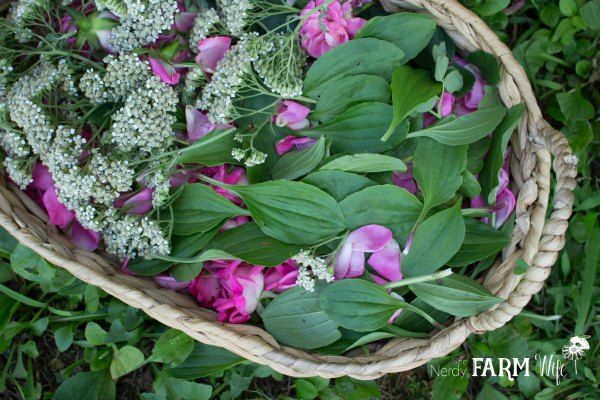
Tips for Using Liniments
Gently rub over affected areas using cotton balls or a soft, small, folded piece of cloth.
For targeted spot treatments – soak a piece of gauze in liniment, squeeze out excess liquid, and secure in place with a bandage for several hours or overnight.
Varicose vein liniments are often instructed to be rubbed in the direction of your heart.
Unless the liniment is specific for wound care (like the Jethro Kloss Liniment), don’t apply to cuts.
Liniments are made for external use, not internal use. Don’t drink your liniment, and be sure to put the skull and crossbones symbol on your creations, so no one accidentally mixes it up.
Avoid using them on or around your eyes, mucous membranes, or sensitive areas.
Be cautious using a heating pad along with a freshly applied warming liniment. Use them at separate times, so you don’t overheat an area.
If you’re pregnant or have significant health conditions or concerns, check with your health care provider about using herbs or homemade liniments.
Free Printable: Homemade Liniments Cheat Sheet
Here’s a handy printable that you can use as a reference guide when making your own liniments.
Just click on the image of the printable above and it will open a PDF file that you can save and print. (Having trouble with it opening on your device? Contact us and tell us you need the liniment printable sent as an email attachment instead.) :)
Feel free to share with family and friends!
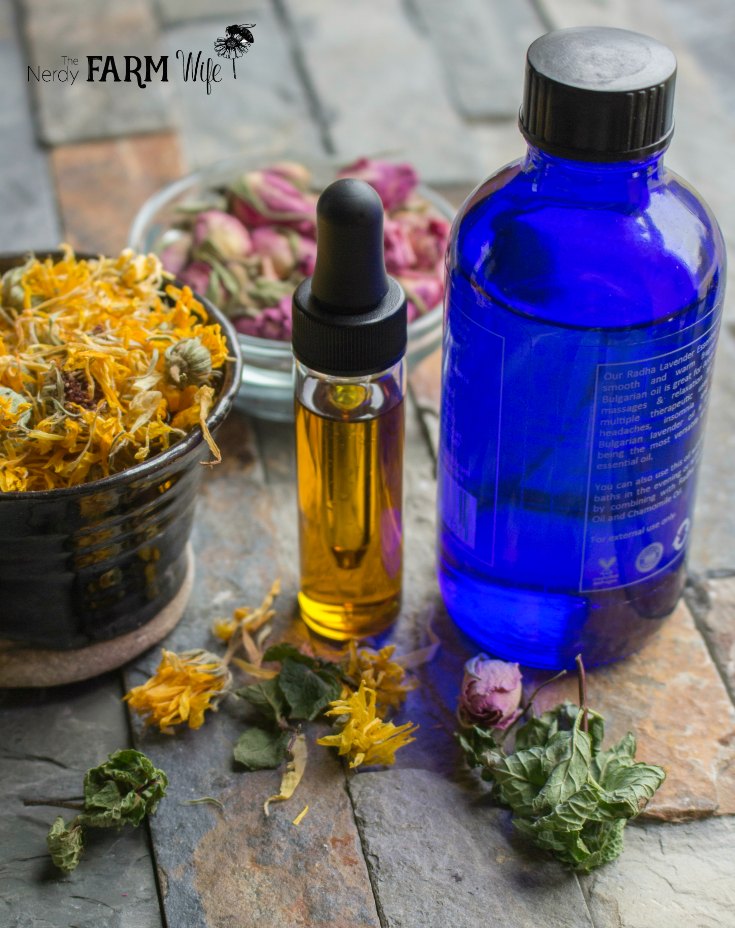
Homemade Liniment FAQS
Can I add essential oils to my liniment?
You could, but I normally wouldn’t. Liniments are already strongly concentrated, and don’t need the addition of essential oils. You’d also need to add some type of solubilizer (such as Polysorbate 20 or a more “natural” option called Solubol), or the essential oil droplets will separate from the liniment and go on your skin undiluted, which could cause negative skin reactions.
Some commercial liniments contain wintergreen essential oil, which has some safety considerations around it. Because I’m highly allergic to aspirin, I avoid wintergreen completely, so can’t comment on using it, other than advise that you research it thoroughly first and use caution when handling the undiluted oil.
Can I add a tincture to my liniment?
Absolutely! Tinctures make a great addition after you’ve infused and strained your finished liniment.
One good option to add to liniments is a tincture made of fresh St. John’s Wort flowers. Fresh is best with St. John’s Wort, and this way you know you have a good dose of its pain relieving components.
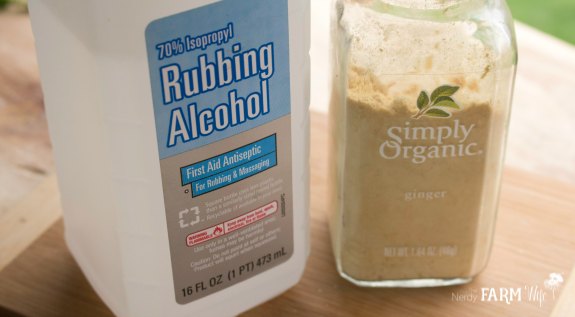
Can I reuse the herbs after they’ve infused?
Once the herbs have been infused, most, if not all, of their beneficial compounds have been transferred to the liniment. The spent herbs should be composted if you’ve used vinegar or vodka. (If using rubbing alcohol, I personally put the used herbs in the trash instead, to avoid accidentally contaminating my compost pile or harming a small critter.)
Can I turn a liniment into a salve to make it easier to apply?
No, liniments are water-based liquid preparations, while salves are oils that are held together with wax.
You could instead use the liniment as the liquid portion for a homemade lotion or cream.
I forgot to strain my homemade liniment and it’s been 6 months! Is it still good?
If the herbs were completely submerged in liquid the entire time, and the contents still smell good, and there’s no visible signs of spoilage, then your liniment is probably still okay to use. I often forget to strain my mixtures on time too – you’re not alone! :)


